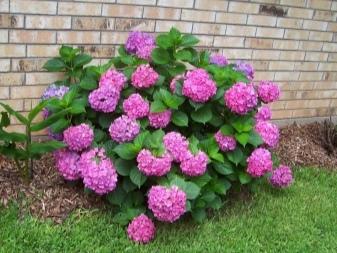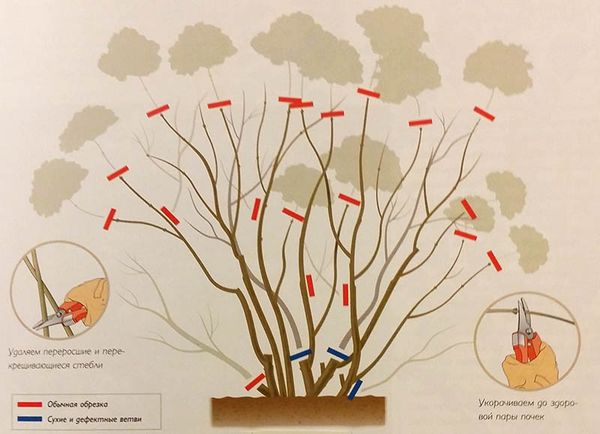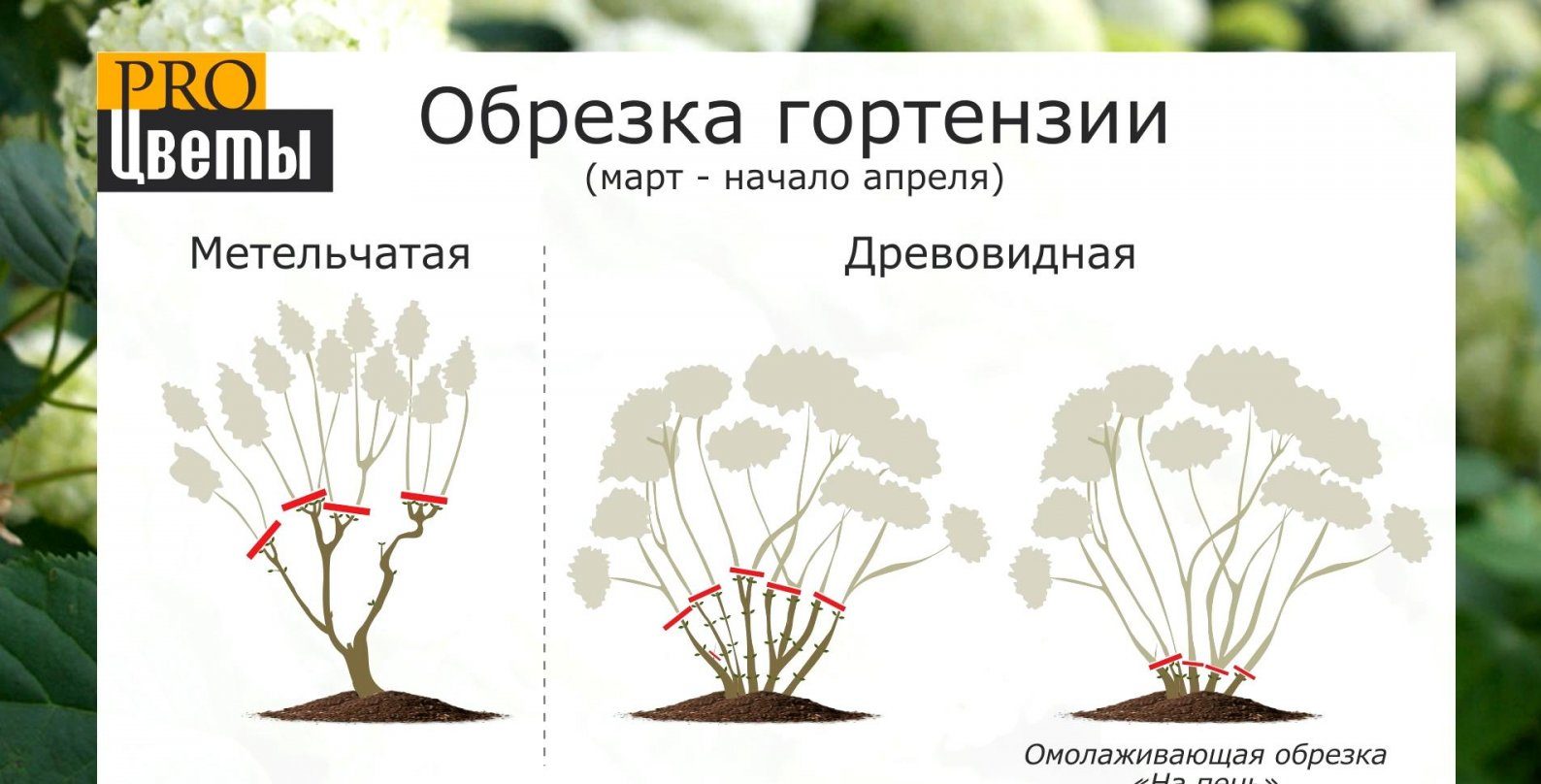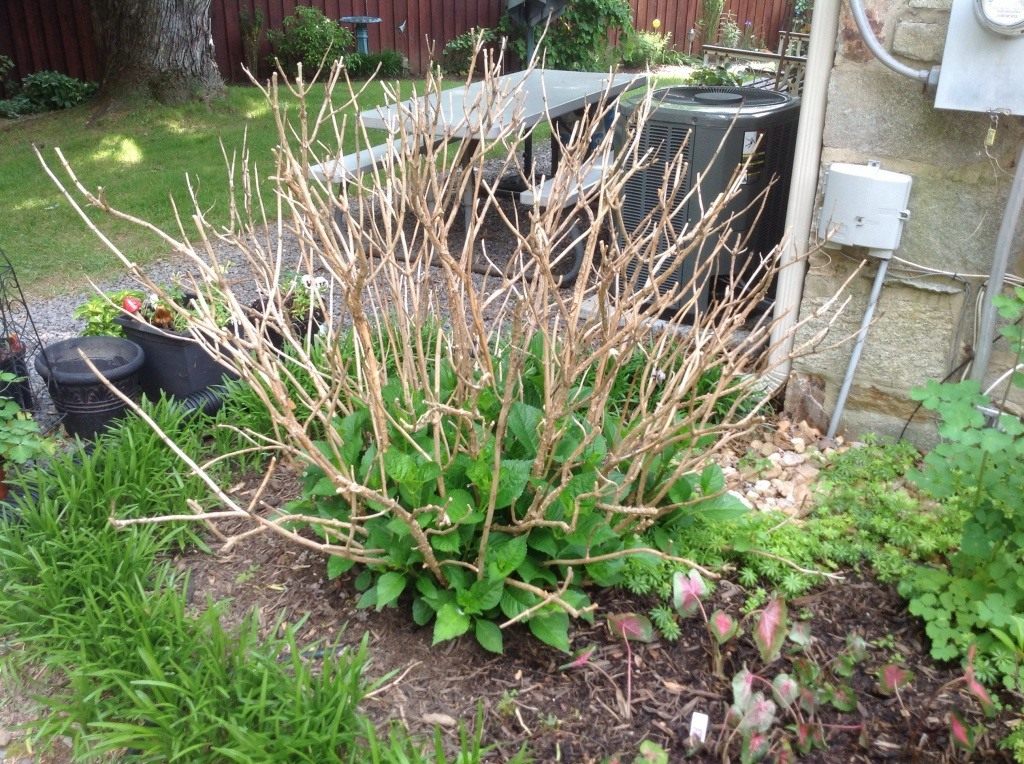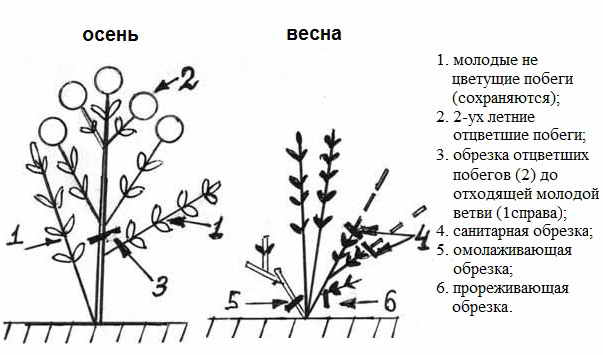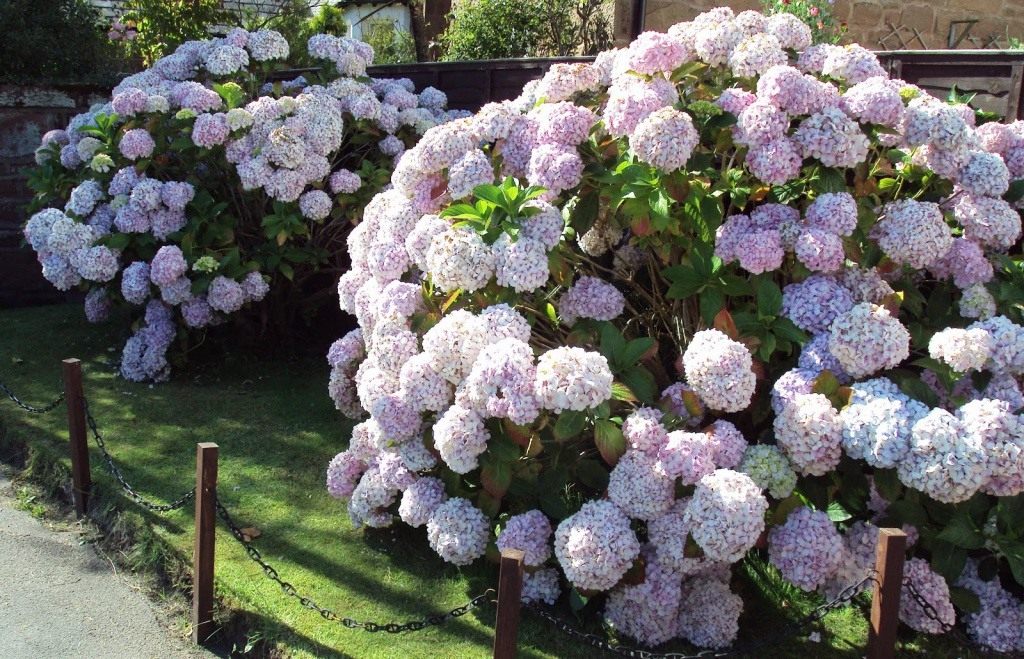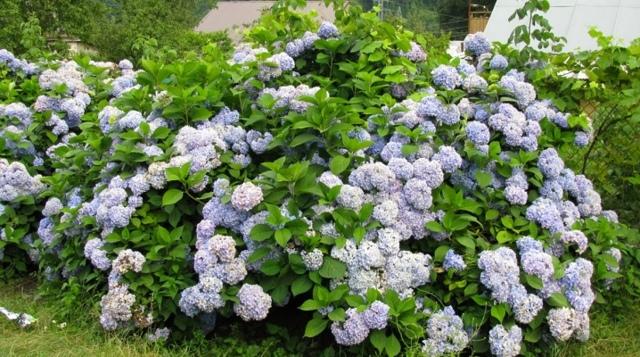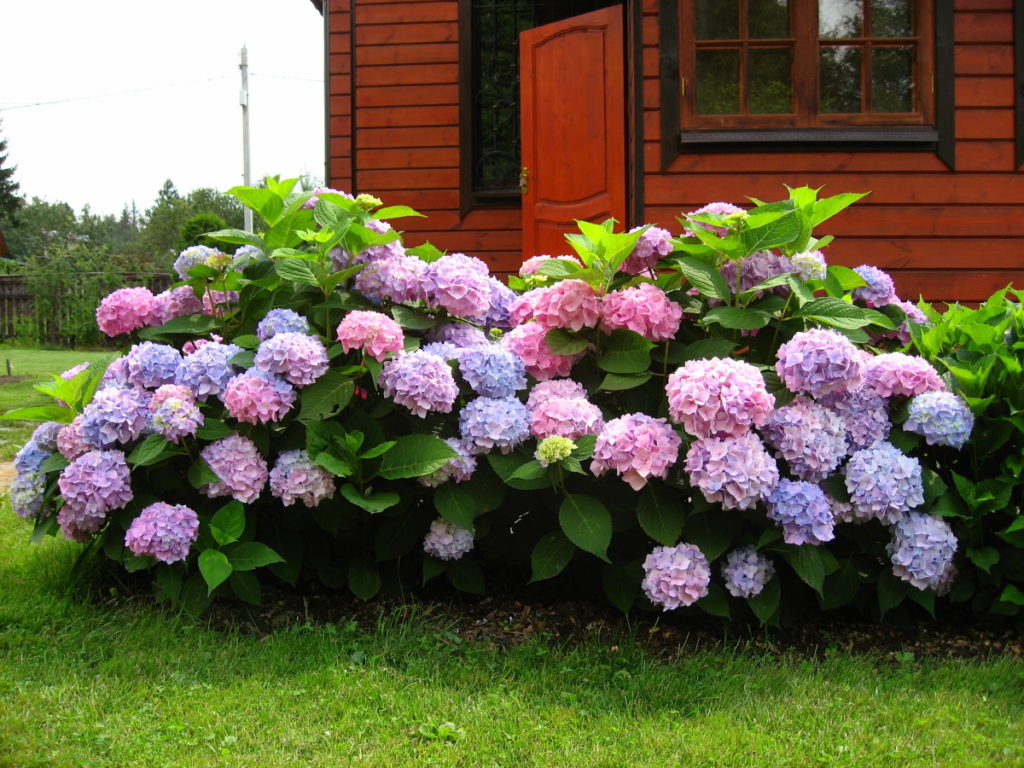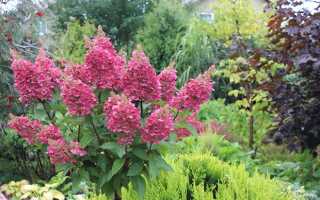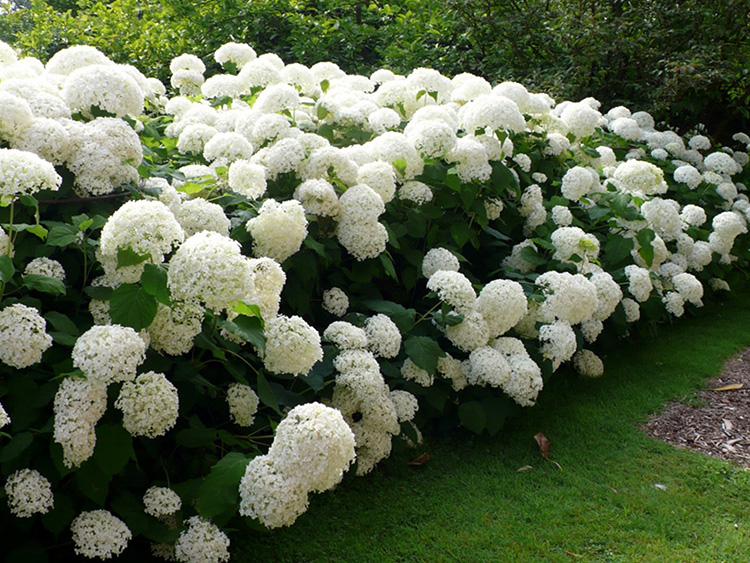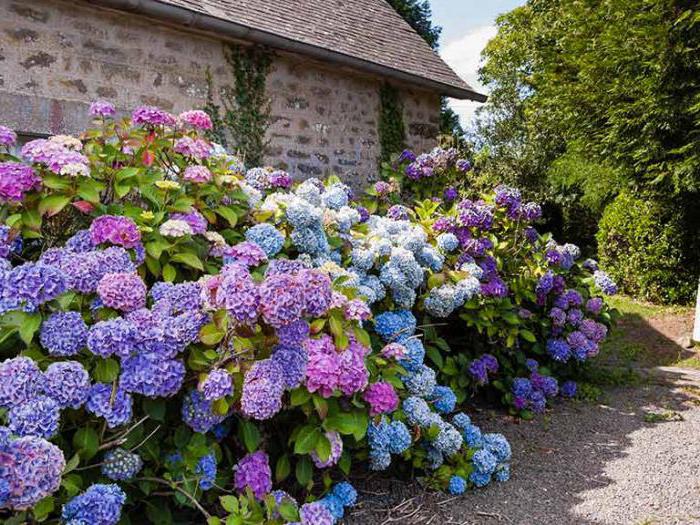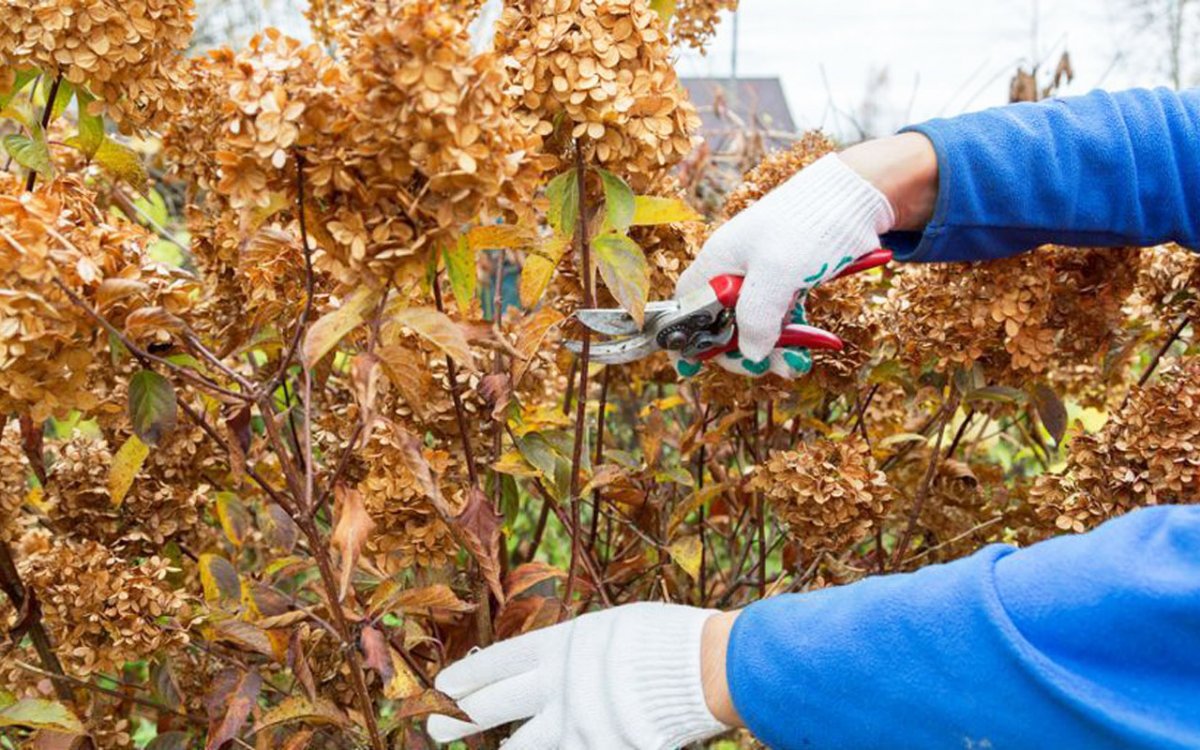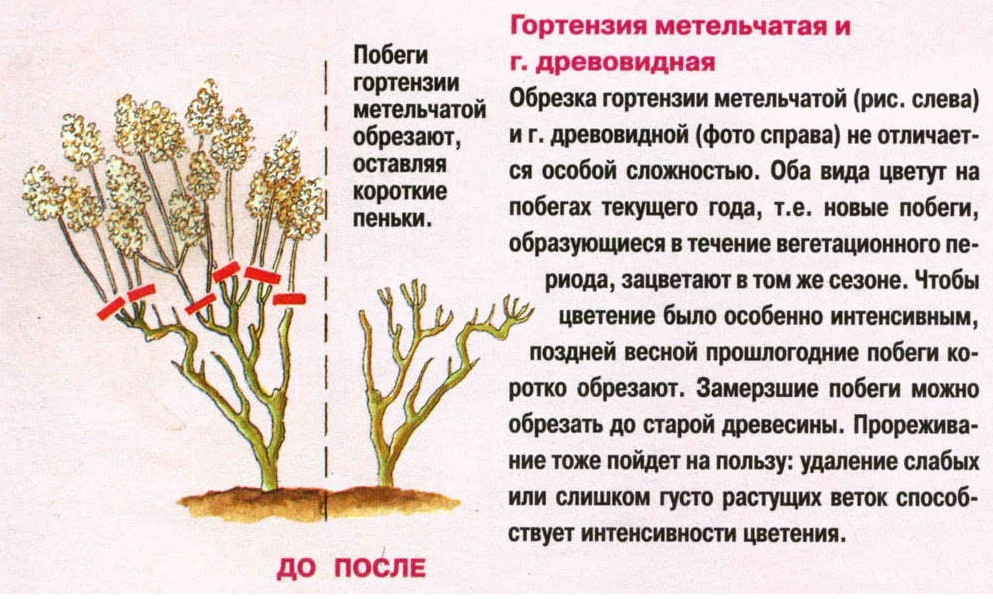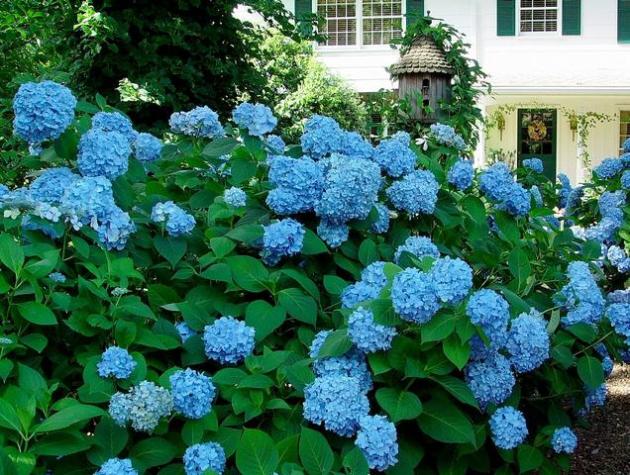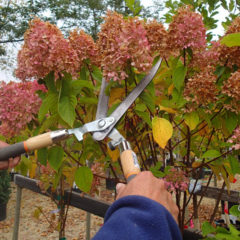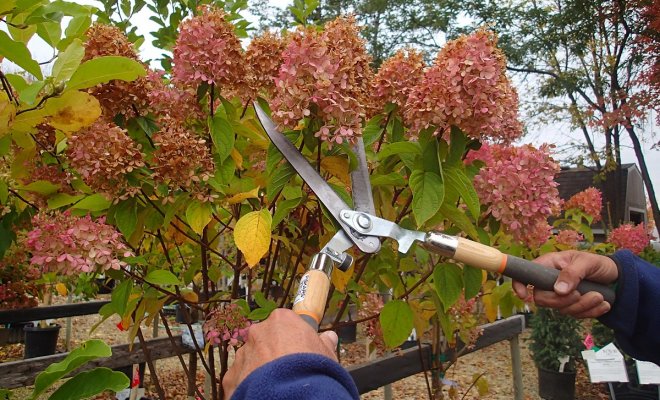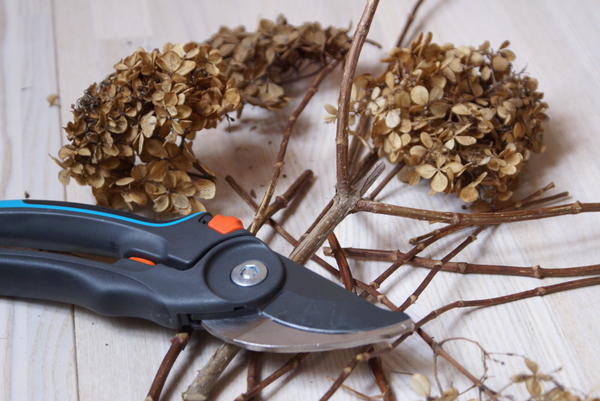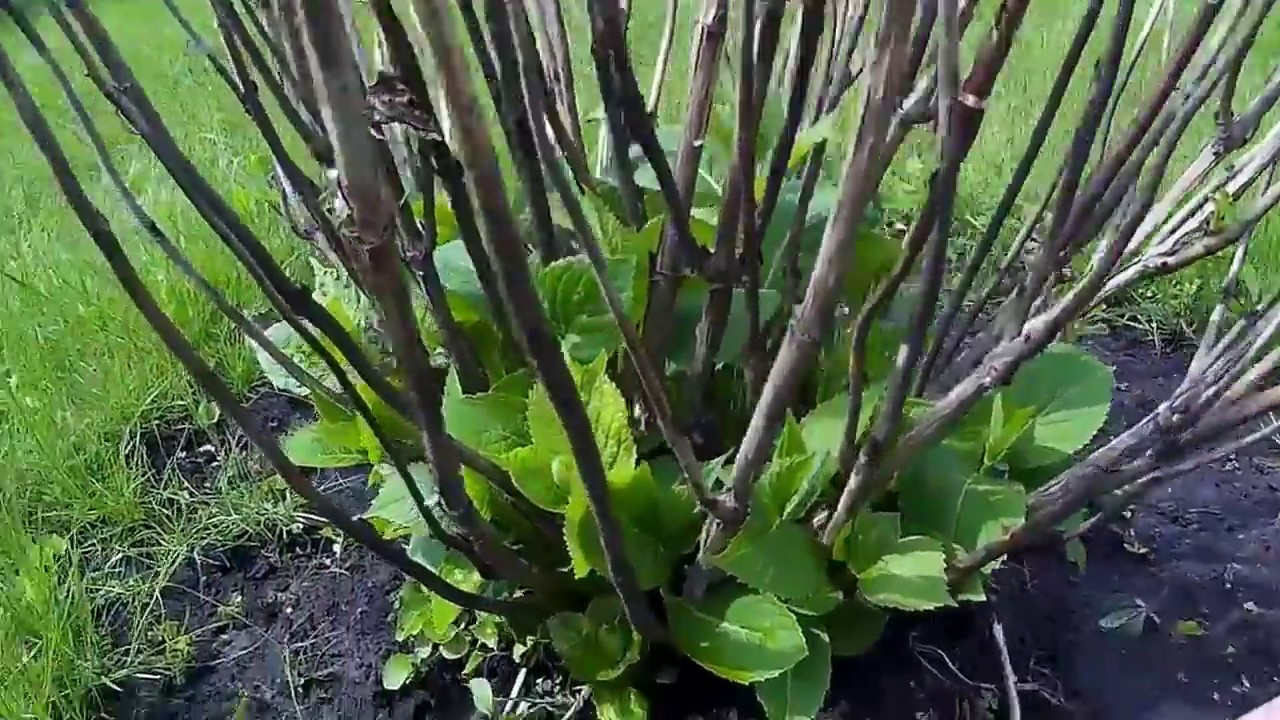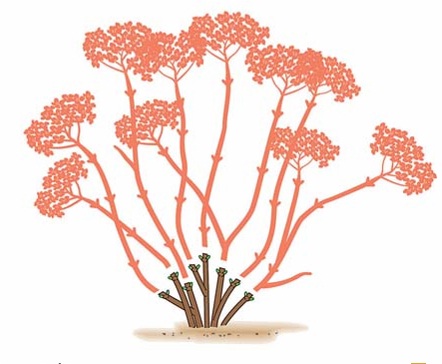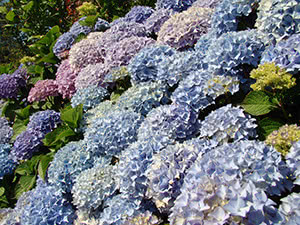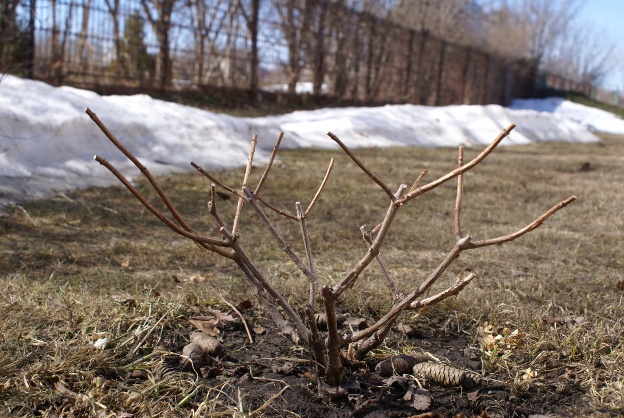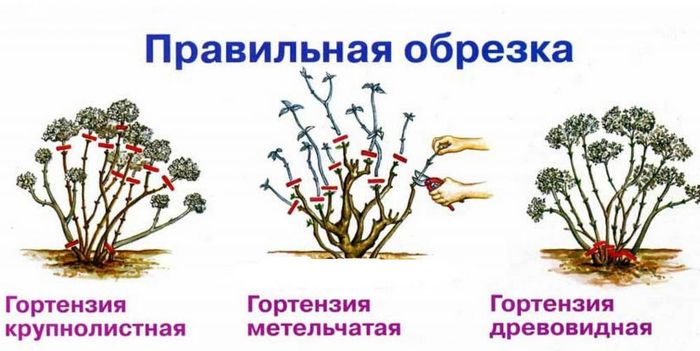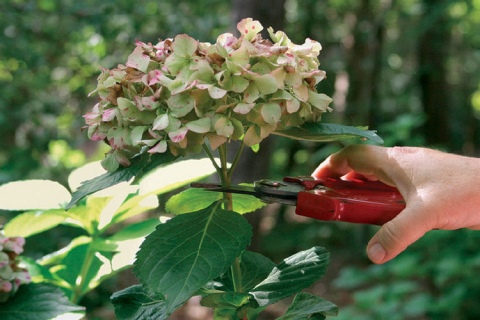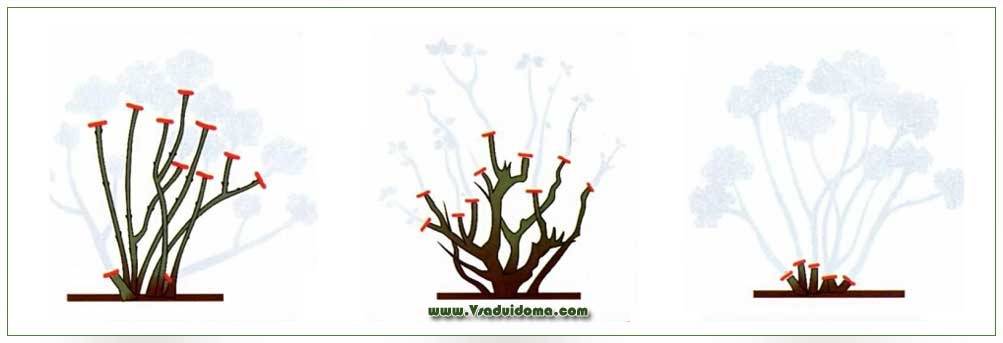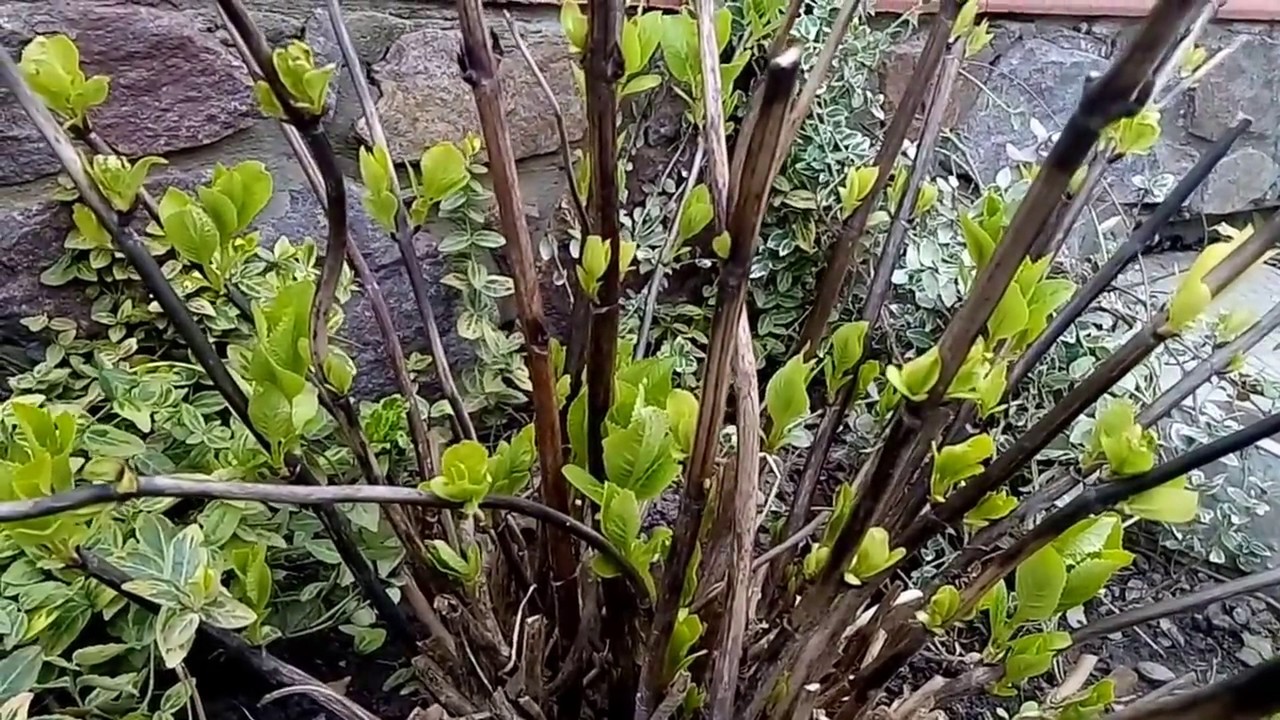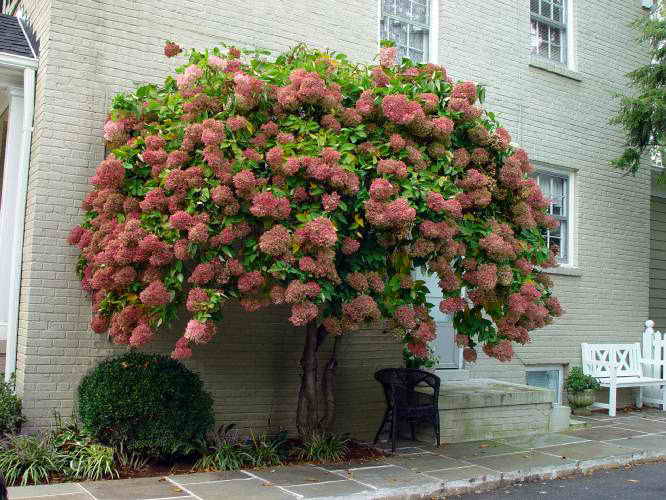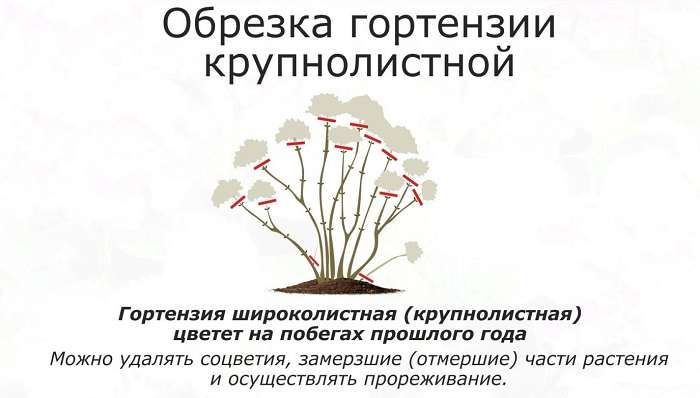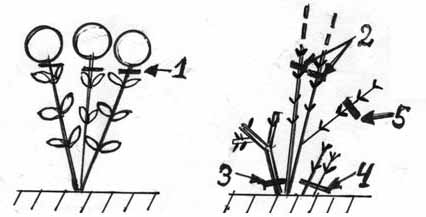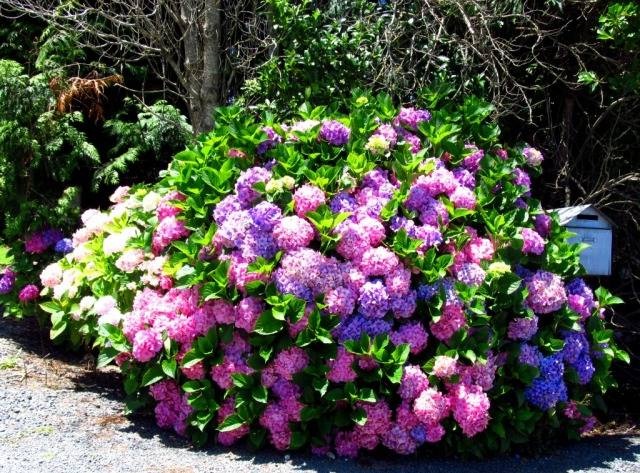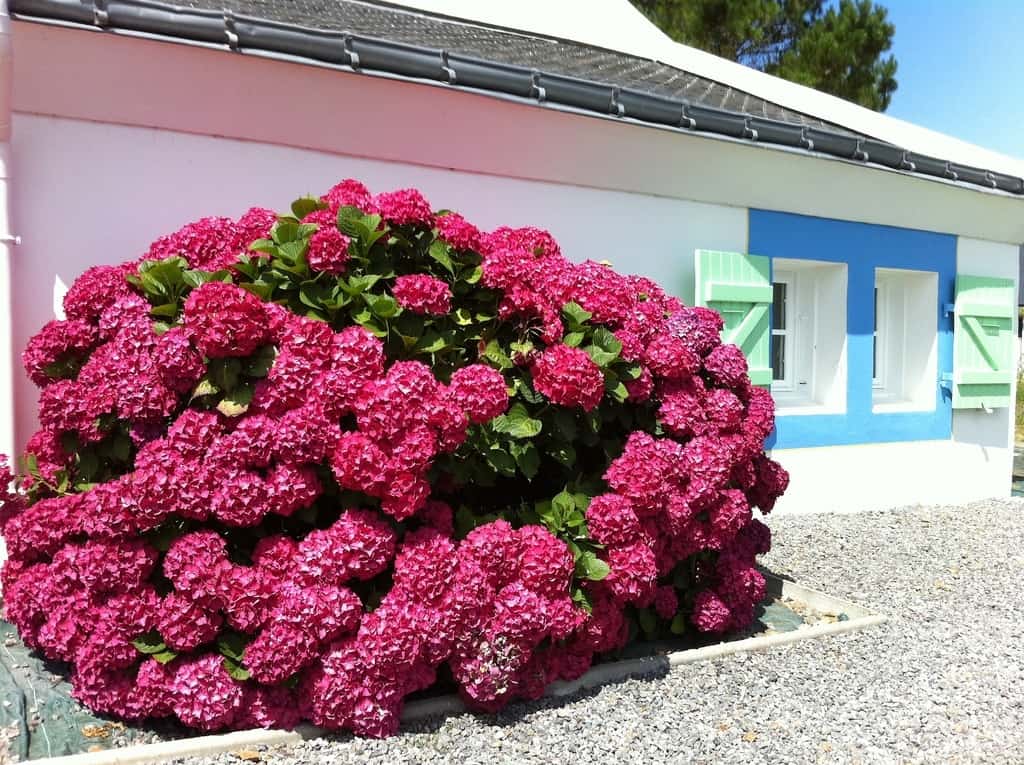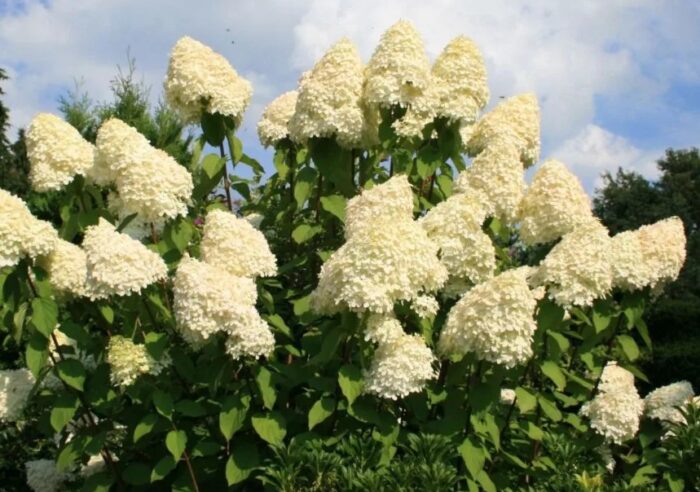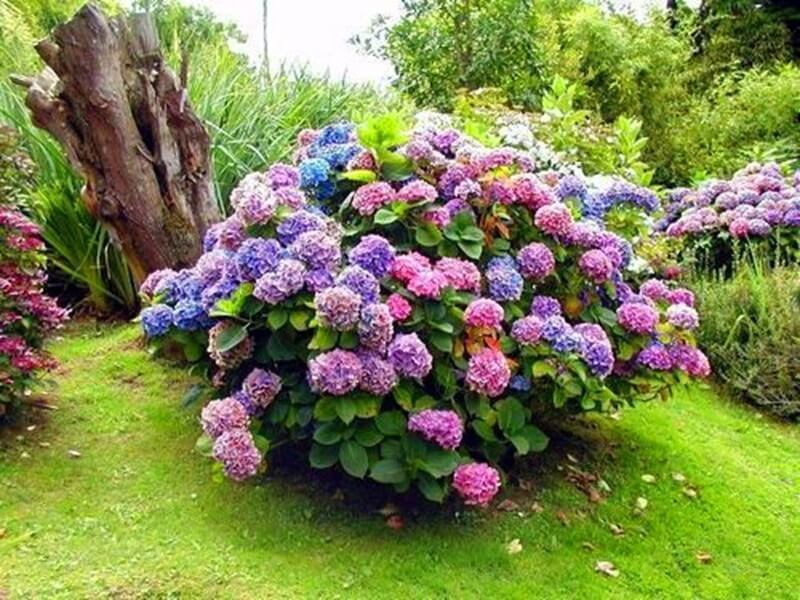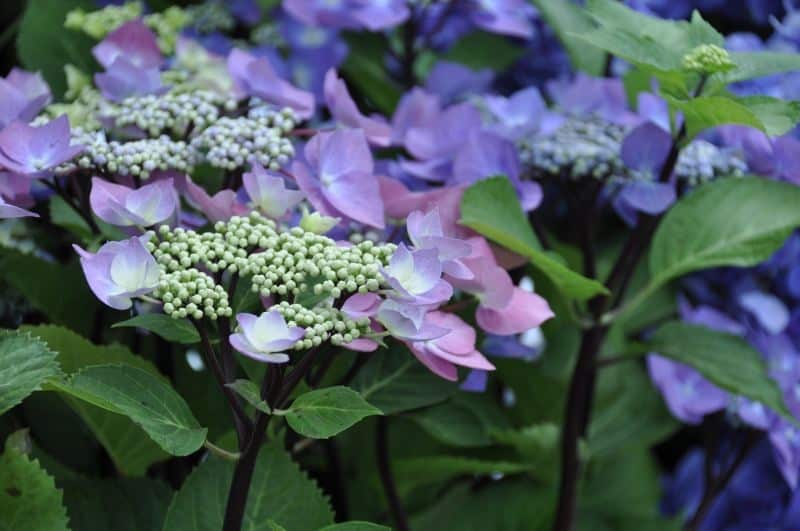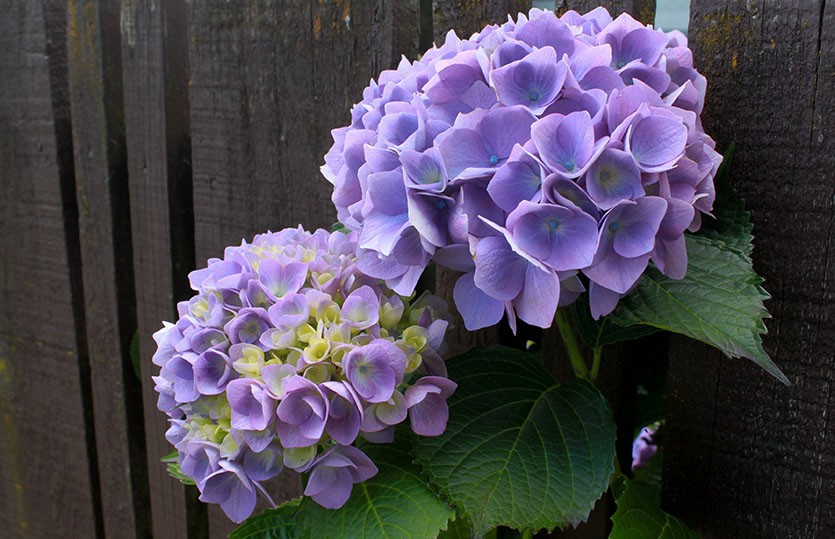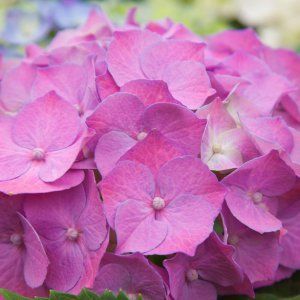How to properly prune for beginners (diagram)
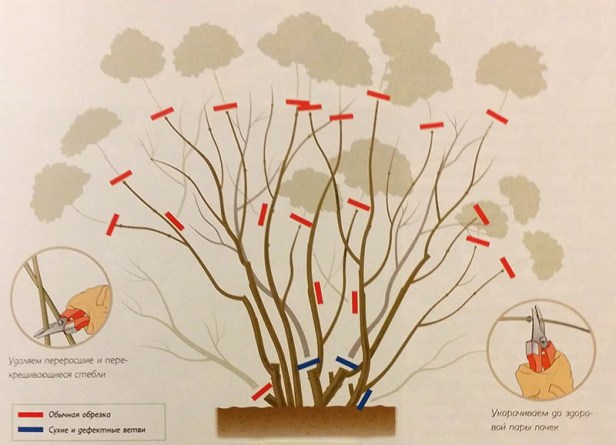
Inexperienced gardeners often lack the knowledge to care for their plants. However, you don't have to learn from your own mistakes. It is enough to study the information in advance to ensure that the plantings are properly cared for. Since pruning each type of hydrangea has its own characteristics, they must be taken into account. Consider how to properly prune each type of hydrangea in the fall.
Paniculata
In the case of panicle hydrangea, you shouldn't be too zealous. Skeletal branches, those that grow from one point, are not touched. You only need to cut out incorrectly growing shoots - curves directed towards the inside of the bush. Faded panicles on the shoots of this year must be removed. If this is not done, young fragile twigs can break off under the weight of the snow.
The pruning of inflorescences is carried out together with a part of the shoot, leaving 3-4 lower buds on it. With this formation, the bush in the spring will look lush and neat at the same time. If the panicle hydrangea is already in need of rejuvenation, from the shoots that take growth at one point, they leave one healthy strong, directed outward, and the remaining branches are cut off at the root. In the spring, extinct shoots are cut off and the bush is given its final shape.
On a note! This type of hydrangea can be formed on a trunk, then the bush will resemble a small decorative tree, more like a bouquet.
Tree-like
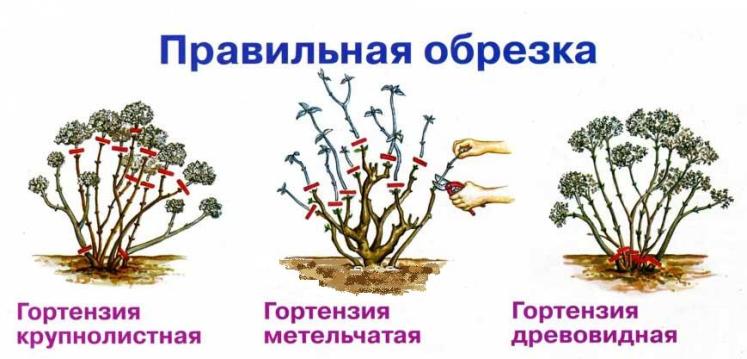
Young saplings of tree hydrangea do not touch the first 3-4 years. By breaking this rule, you can provoke the death of the bush. In a young bush, only faded inflorescences are removed. On the shoots, 3-4 pairs of buds must remain, from which new branches will subsequently grow, forming a lush crown.
In this form, the shrub takes cover and remains until spring. When the bush gets old, rejuvenating pruning is performed. After it, stumps with a height of 10 cm should remain on the plant, which will give an impetus to the active growth of new branches.
Important! It is better to carry out anti-aging pruning with a gentle method, stretching for 2-3 years, otherwise the roots may not have enough nutrients and the plant will die
Large-leaved
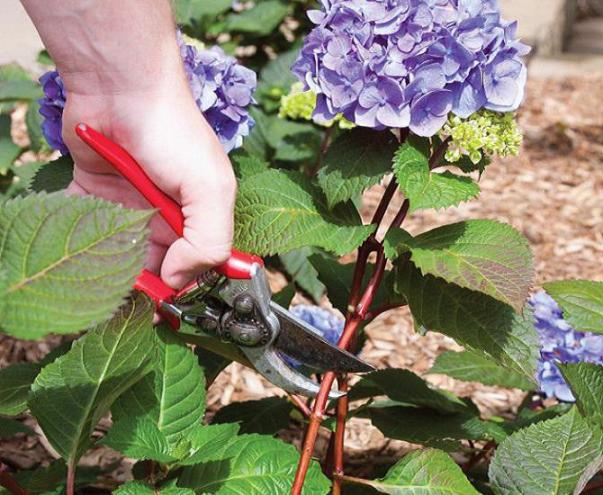
Large-leaved hydrangea blooms on shoots of the second year, so it is important to preserve them during wintering. In the fall, only cleaning the bush is carried out, in which sick weak or old lower branches are removed
The upper branches hibernate under cover, in the spring they are examined and cut out by those that have suffered from frost. This type of hydrangea often sprouts from zero shoots, but flower buds on the lower branches are almost non-existent.
For this variety, it is recommended to prune the shoots immediately after flowering, so that the plant has time to grow new branches before the onset of winter. Thinning of the bush is carried out by cutting out the shoots directed inward. In order to rejuvenate the large-leaved hydrangea every 3 years, part of the old shoots is cut to a height of 30-40 cm.
Before covering the plant, cut out old and diseased branches. Pruning also depends on the climate in which this hydrangea is grown. If summers are long and warm, deeper pruning can be done.
On a note! Radical cutting of large-leaved hydrangea is allowed in central Russia, in the Kuban and in the southern regions. In the Urals, Siberia and the Leningrad Region, only superficial pruning is permissible.
Preparing the plant for winter
Another circumstance that should be taken into account is that no matter when you intend to prune your hydrangea, in any case, it needs to be prepared for winter.
Despite the fact that hydrangea is a frost-resistant plant, still the climate of our country is not very suitable for it, therefore it is advisable not only to cover the bushes for the winter, but also to prepare for it
This is especially important for varieties of hydrangea that do not tolerate frost and for those bushes on which you decide to leave inflorescences for the winter.
This is easy to do - preparing the plant for winter comes down to the fact that all the leaves from the lower part of the inflorescence should be removed, but the upper ones should be left. These leaves will protect the bud at the end of the branch from the cold. Hydrangea varieties that are not sufficiently resistant to frost prefer just such manipulations.

Features of pruning by grade
In gardens, paniculate, tree-like, ground cover and large-leaved hydrangeas are often grown. Depending on the type of plant, the rules for its haircut also change. You need to know them, since mistakes will lead to the fact that the bush does not bloom magnificently and elegantly.
Large-leaved and ground cover
Pruning of large-leaved hydrangea is carried out mainly for sanitary purposes. During it, dead shoots and already wilted inflorescences are cut from the plant. You can also thin out the bush somewhat if it is too thick. It is impossible to rid the plant of last year's shoots before winter, since it is on them that buds for inflorescences are laid in the fall. Having cut them off, the owner will receive only a lush, but not a flowering bush in the spring.
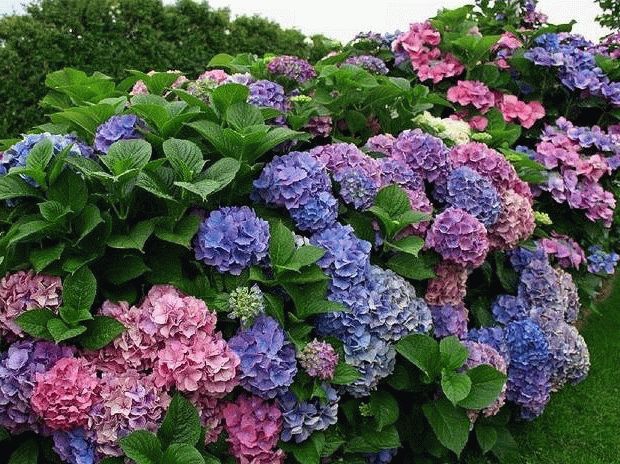
In order not to spoil the hydrangea next year, it is necessary to cut off the faded inflorescences in the summer. This will allow the plant to have time to give young shoots before the onset of the cold period, and, therefore, blooming caps will appear on them in the summer.
When the hydrangea takes cover for the winter, weak shoots are cut out of the bush, this will make it easier for it to winter.
Groundcover hydrangea also does not require serious trimming, despite the fact that it produces flowers on spring shoots. When to prune your hydrangea - in spring or fall - depends on the weather conditions and the gardener's preferences. It is enough to prune the ground cover once a year, removing only unnecessarily long shoots that break its shape.
Panicle hydrangea
According to the rules, pruning of panicle hydrangea is carried out in the fall. Skeletal shoots cannot be touched. Only those branches that grow inside the bush are pruned, excessively thickening it. Dried panicles must also be removed. Young shoots are very fragile and break easily under the snow mass. If it can be seen that they will not lignify before winter, they must be removed with pruning shears.
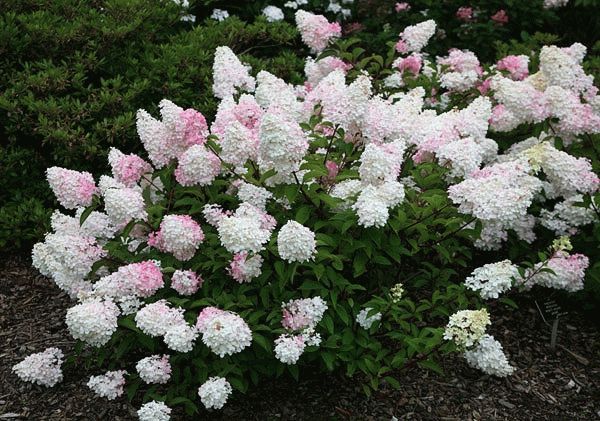
Before winter, the shoots on which there were inflorescences are cut off, leaving only 2-3 buds on them. This is necessary so that in the spring the hydrangea, having spread its leaves, looks elegant. The buds are laid only on spring shoots.
Hydrangea paniculata, which is pruned for anti-aging purposes, is processed in the fall. To do this, cut off several skeletal branches, leaving only 2-3 to grow, extending outward.
Tree-like
Pruning hydrangea trees is mandatory. This should be done in the fall. In winter, all dry inflorescences, if left on the branches, will be filled with snow, become unbearably heavy for the plant and break it. You need to cut them off with a small leg. A very active haircut can harm the plant, especially if it is young and not yet ready for rejuvenation.
Pruning hydrangeas in the fall for beginners may seem difficult because of the need to count the buds left on the shoots (there should be 3-4 of them), but soon it comes to automatism and no problems arise.

Rejuvenating pruning of a tree hydrangea is carried out no earlier than 7 years after planting. With a not very large root system, all shoots are cut off before winter, leaving only 10 cm hemp above the ground.If the root is powerful, then only ¼ of the bush is cut off in a year, and so the plant is gradually completely rejuvenated.
If you cut the bush completely with an extensive root, it will not have enough strength to recover.This is because the root system will need constant replenishment with substances that enter it from the aboveground part, and only young runs will not be able to give them to the required extent.
Pruning hydrangeas in spring may be necessary if, after a harsh winter, there are frozen and broken branches on the bush. Cut them off with pruning shears when the most active spring sokokhod has already passed, since otherwise the plant will weaken when touching living tissues.
When is the best time to move?
In order to correctly navigate when it is better to move the plant to a new place, it is important to understand that for different types of garden hydrangea, tree-like, paniculate and large-leaved, there are different conditions for transplanting. Hydrangea does not respond well to transplanting, so be as responsible as possible when choosing a place.
Hydrangea does not respond well to transplanting, so be as responsible as possible when choosing a place.
Experts advise replanting the flower in spring or autumn. But situations are different, and sometimes an emergency transplant is required, in which case it can be done in the summer.
In the spring
If you decide to transplant the bush in the spring, then the land must be prepared in advance - in the fall.
- In the beginning, you need to dig up and carefully break up large clods, loosen the ground.
- Watering.
- After 24 hours, you need to fertilize the soil. A nutrient mixture is being prepared: humus, sand, leafy earth are mixed in equal proportions, 20 grams of superphosphate and 20 grams of potassium sulfate are added there.
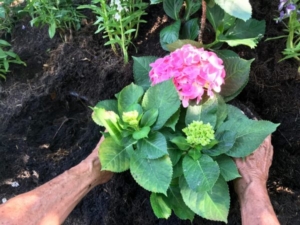
Consumption of the resulting fertilizer: 1 bucket per 1 meter.
In the spring, the transplant is carried out until the bud breaks.
It is also important to wait until all the snow has melted. When transplanting in spring, as a rule, the plant does not form buds, since it gives all its strength to restore the root system and adapt to a new place.
Video about the nuances of transplanting hydrangea in spring:
Summer
There must be a very good reason to transplant a bush in the summer. Almost all summer months - June and July, the hydrangea has a flowering process.
When transplanting a flower in the summer, it will not bloom the next year.
If, nevertheless, it was decided to transplant in the summer, then try to be in time before the abundant flowering begins. At this moment, the flower gives all its strength to the formation of a flower mass and stress, in the form of a transplant, can even lead to the death of a shrub.
In autumn
It is most correct, according to experienced gardeners, to transplant hydrangeas in the autumn. The procedure is best carried out in September, then the shrub will have time to take root in a new place before the onset of cold weather.
For transplanting, you need to prepare a planting hole in advance and fill it with nutritious fertilizer: 10 liters of the mixture are applied per 1 square meter: 5 kg of humus, 5 kg of river sand, 5 kg of leafy soil must be mixed, add 1 tablespoon of superphosphate, 1 tablespoon of potassium sulfate ...
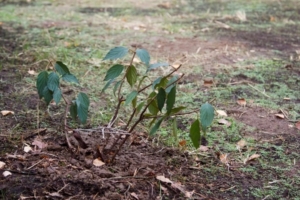
The bush itself, which needs to be transplanted, is dug in in the summer. The trench should be at least 30 cm and go deep into the bayonet of the shovel. He puts rotted manure into the resulting pit. Thanks to him, the roots are saturated with organic matter and will well tolerate an autumn transplant.
A transplant in the autumn period has many advantages over the spring one. The risk of damage to the root system is minimized, since in autumn the roots "sleep" and will not experience stress from this procedure.
Video about the features of transplanting hydrangea in the fall:
Is it possible to have an adult plant in the fall?
For transplanting, it is best to use flowers that are no more than five years old. At this age, the plant has already formed and can freely withstand various diseases.
When transplanting an adult flower, it is necessary to prune. The ground part of the hydrangea should correspond in size to the root system.Pruning the plant is necessary, since the root system will be injured in any case, and it will be easier for it to transfer the transplant.
Timing
The choice of the correct timing directly depends on the habitat of the hydrangea. For the southern regions, the transplant can be carried out from September to October. And in the regions of the Middle Lane, it is best to carry out this procedure at the end of summer, or at the very beginning of autumn.
Hydrangea care in the first year of planting
Caring for a perennial crop is simple. The most important thing is to systematically moisten the soil. It is recommended to pour 35-50 liters of water at room temperature under each bush. The frequency of watering in the warm season is every 2-3 days. If the near-trunk circle is mulched, then the frequency of watering is reduced to 1 time in 5-7 days. To improve aeration of the root system, you should systematically loosen the soil around the bushes. How deep should it be? The recommended depth indicator is 45-55 mm.
In order to achieve abundant and long-lasting flowering, flower growers recommend making a comprehensive top dressing every spring and summer. In mid-April, a urea solution is introduced into the soil (20-22 g of the component is stirred in a bucket of settled rainwater). Under each adult shrub, you will need to pour several buckets of such a solution.
After the plant has bloomed, a complex mineral dressing should be added to the soil. Throughout the summer, slurry is poured under the bushes
However, it is important not to overdo it with the amount of feeding, because inflorescences of too large size break fragile shoots. To prevent branches from breaking off, it is recommended to control the amount of fertilizer applied to the soil and tie up the shoots
Pruning hydrangea
Hydrangeas, whose age has reached 4-5 years, need systematic pruning. Varieties that bloom on the branches of the current year should be pruned in early spring until the buds have blossomed and sap flow has not begun
Otherwise, the plant will run out of juice and die.
In order not to miss the pruning time, you should pay attention to the appearance of the kidneys. As soon as they swell and take on a revived look, you can proceed with the procedure.
As a rule, the tree-type hydrangea, which is characterized by early awakening, is subjected to the first pruning. Long shoots are pruned at a height of 4 buds. The trimmed parts of the shoots can be used as cuttings.
Be careful when pruning the paniculate perennial species. Last year's branches are pruned by only a third. Even such small pieces can be used as cuttings.
Large-leaved perennial almost does not need pruning. It is enough only to systematically carry out anti-aging pruning, removing dried or broken shoots, branches growing inside the shrub.
Hydrangea care after flowering and preparation for winter
After the flowering of a perennial culture, it is worth cutting off the inflorescences that have withered. The bases of the bushes are highly earthed, the site is mulched, which makes it possible to organize the protection of plants from severe frosts.
Lignified shoots are able to withstand frosts even without shelter, if, of course, the shrub is planted in the southern regions. However, it is better not to risk it and take care of preparing the hydrangea for the harsh winter in advance:
- In mid-autumn, young bushes are covered with a layer of dry soil. The branches of plants that are more than 3 years old are bent to the surface of the soil.
- The shoots are covered with a layer of lutrasil. At the edges, the material is fixed with bricks, which will make it possible to prevent the material from tearing off by gusts of wind.
- Adult shrubs are neatly tied with twine and wrapped in a layer of lutrasil or spandbond. A cylindrical frame is constructed around the shrub. For its construction, you can use a metal mesh. The distance from the net to the bush should be within 22-25 cm.The height of the building should exceed the height of the perennial by 10-12 cm. The area from the hydrangea to the net is filled with dry foliage. It will be possible to remove the shelter only at the end of March, when the frosts have passed.
Hydrangea paniculate and treelike.
A group of hydrangeas blooming on new growths forms buds that grow and bloom in one year, usually blooming later than other hydrangeas - from mid-summer to the first frost. They do not suffer too much if the pruning is not done at a certain time; it is not done until late spring, early summer and when the buds are still open. This group includes panicle and tree hydrangeas.
Pruning panicle hydrangea
Panicle hydrangea is the most popular in garden culture. Last year's shoots each year form new flowering branches, which are not always strong, so everything that is superfluous from the plant is cut out. To form a bush, panicle hydrangeas are allowed to grow with zero shoots. Weak branches emerging from the ground are cut out, leaving stronger ones for flowering. It is best to prune hydrangeas in paniculate spring, in autumn you need to remove faded inflorescences, since fragile ones easily break off after snowfalls. Sometimes in the fall, part of the shoot is cut off to facilitate spring pruning and reduce the likelihood of branches breaking off in winter.
- Sanitary pruning - for paniculate hydrangea, this is basically the removal of broken branches, since frosting only occurs in very frosty winters. Older plants have quite a few dead, withered branches.
- Rejuvenating pruning is closer to pruning a tree, since even with the formation of a bush, paniculate hydrangea has rather thick and durable trunks and skeletal branches. Therefore, the main trunks and skeletal branches can be preserved for many years, and only old branches, with dying growth, are cut out on a ring or to a branching young branch. Recommended in some sources "planting on a stump" for paniculate hydrangea (as opposed to tree) is not advisable.
- Thinning pruning. In panicle hydrangea, shoots form very quickly, the plant thickens quickly, lighting conditions deteriorate, and flowering decreases. Therefore, it is necessary to cut out small branches that do not produce high-quality inflorescences, all growing inside the bush. Of three young shoots growing from one point, you need to leave 1 - 2 shoots growing outward.
- Flowering pruning is aimed at developing a strong growth with large inflorescences. It consists in shortening all last year's shoots in the spring, leaving 1 - 3 pairs of buds on them, from which the shoots of the current year with inflorescences will develop. It must be borne in mind that the thicker the cut off the shoot, the more buds on it can be left without deteriorating the quality of the inflorescences.
Pruning hydrangea in spring diagram
1 pruning of inflorescences 2 sanitary pruning 3 rejuvenating 4 pruning for flowering - shortening shoots 5 thinning - removing excess shoots
Pruning hydrangea tree
Pruning hydrangeas in a tree-like spring is best. In the fall, it is imperative to cut off faded inflorescences. If you want to rejuvenate old bushes and cut large branches, then it is better to do this earlier.
Pruning hydrangea tree-like takes place every year, which is carried out in the following order
- Sanitary pruning - for a tree hydrangea, this is mainly pruning the frozen ends of last year's shoots and broken branches.
- Rejuvenating pruning - cutting branches older than 3 - 4 years of age to the base and, first of all, those on which the last year's growth was weak.
- Thinning pruning - cutting of small shoots that are not capable of flowering, thickening the bush, growing in the center and, above all, weak zero shoots.
- Pruning for flowering - shortening the growth of the last year, leaving 2 - 4 pairs of well-developed buds on them, from which strong flowering shoots grow in the current year.Often after frosty winters, sanitary pruning of frozen shoots replaces all types of pruning.
1.pruning of inflorescences 2.sanitary pruning 3.rejuvenating 4.thinning of shoots 5.printing for flowering - shortening of shoots
Similar types of hydrangea: motley, ash and others are cut in the same way.
General rules for pruning
The hydrangea must be trimmed correctly, as otherwise it can even be ruined. There are general guidelines that apply to all varieties and species. You cannot cut the plant in rainy and very dry weather, as well as in extreme heat. It is better to carry out pruning in the evening, then all the damaged places will have time to drag on by the morning and will not attract unnecessary insects and will not dry out if the sun bakes strongly.
Usually, this phenomenon is observed when pruning a tree variety, if necessary, to remove most of the crown.
The cut is made obliquely, in one squeeze of the secateurs, without crushing the plant tissue. Sometimes a sharp knife or a garden saw (if the branch is thick) can be used in places where it is impossible to get with the pruning shears. This should be done only as a last resort, since such a plant injury takes longer to heal.
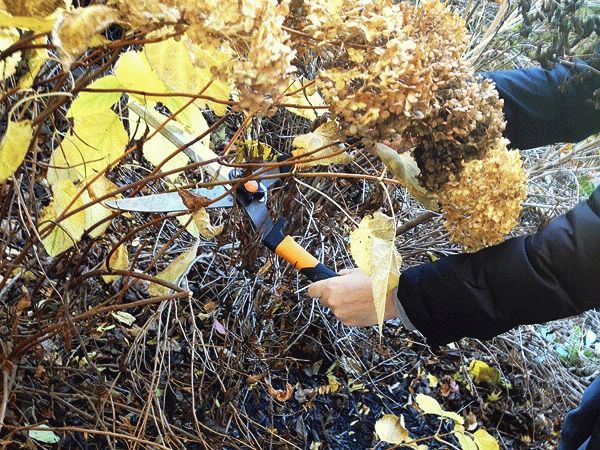
How to prune hydrangeas correctly in spring?
Gardeners recommend carrying out work every year in order to stimulate the growth of new shoots and increase decorativeness. In addition, spring pruning of hydrangeas promotes rejuvenation, the formation of a lush crown and an increase in the number of inflorescences. There are several types of trimming:
- Sanitary... It implies the removal of dried and deformed branches.
- Formative... It is used to control the density and shape of the shrub, for which the ends of the branches are shortened.
- Rejuvenating... It is aimed at renewing hydrangea in spring and implies partial or strong shortening of old shoots.
Garden hydrangea - how to prune in spring?
There are certain rules for carrying out high-quality pruning of a plant, which include the following stages:
- pruning a garden hydrangea begins with thinning;
- weak branches should be cut to the width of a palm from the ground;
- cut out the shoots that grow inside the bush, because they create an unwanted shadow;
- frozen branches are removed before the start of healthy wood;
- a garter is carried out after fixing the plant to the support.

It should be noted that pruning hydrangeas in the spring is carried out taking into account the receipt of the desired shape.
- Stamper... The paniculate type of bush can be grown in the form of a neat tree with a dense crown. To choose for formation, you need a seedling with a clear dominant trunk, which is already three years old. The trunk should be tied to a rail and pinched young shoots in the summer. When the tree reaches the desired size, the upper part is pruned, for which every year the largest branches are reduced by 2-3 buds.
- Bush... When planting, the hydrangea should be deepened, which will help to get several processes at once. Weak shoots should be cut off during growth. To prevent inflorescences from becoming smaller, cut off excess small branches. In spring, shoots are shortened by 2-4 pairs of buds. To obtain a bush form, only sanitization is carried out.
How to prune a tree hydrangea in spring?
This type of shrub is free-growing with lush inflorescences in the form of a cap of a green hue, which gradually turns white. Pruning of tree hydrangea in spring is carried out according to the following scheme:
- Remove the globular buds first, then do sanitary pruning to remove broken or dead ends.
- After that, you need a rejuvenating pruning, for which old branches are completely cut off. Then prune off the zero shoots that are incapable of flowering, and will only take away the strength from the shrub.
- The procedure ends with pruning for flowering, for which last year's shoots are shortened by a length of four pairs of strong buds.
How to process the cuts after pruning hydrangeas?
After the procedure is completed, it is necessary to process the sections, which will ensure disinfection and protection from numerous diseases, as well as from drying out. The simplest option is the treatment with activated carbon, which must be pre-crushed. Hydrangea after pruning allows the use of straightened wax, Bordeaux ointment with fungicidal properties, thicker oil paint, and so on. In addition, it is recommended to carry out top dressing with mineral fertilizers, watering and mulching.
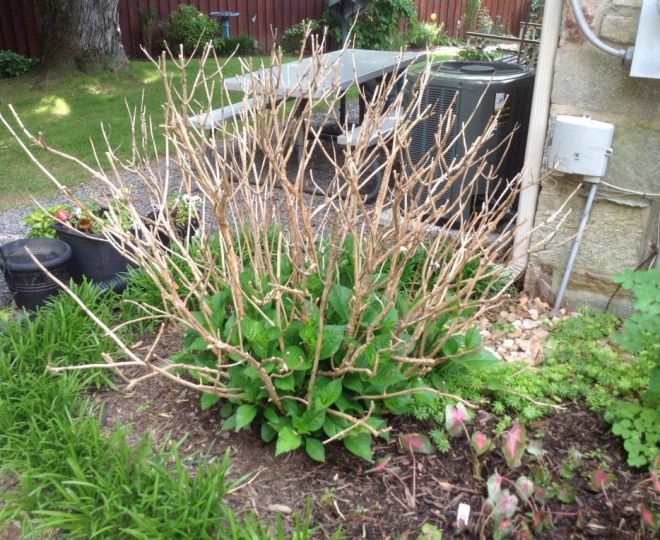
After pruning, hydrangea cries - what to do?
A similar problem arises when the branches were cut too late, when the plant has already woken up and sap flow has begun. If the hydrangea cries after pruning, then the plant can only be helped by processing the slices to "clog" the wounds. Problems can arise if mistakes are made during the procedure.
- If the hydrangea was pruned in the spring at the wrong time, then the growth of the bushes slows down and the flowering will be poor.
- When the work is done in the wrong sequence, it can lead to the formation of an unsuccessful shrub shape.
- Problems can arise when the recommendations for a particular variety are ignored.
Frequent mistakes
It is better to learn from the mistakes of others, and not from your own. The novice florist believes that after pruning hydrangeas, special care is not required. But it is not so
This plant is very fond of attention and in gratitude pleases with lush, beautiful inflorescences. If you cut a plant that has not had time to bloom, then irreparable harm can be done to it.
Violation of the procedure scheme, the use of a dirty or blunt instrument causes deterioration in the health of the hydrangea, and even death. The bush will grow more slowly and bloom worse if it is pruned at the wrong time. An error in the definition of the type of crop will lead to the fact that pruning will be performed incorrectly. This will lead to a slowdown in growth, scarcity of flowering.
Important! Violation of the pruning sequence causes the growth of the shrub and its death. ... Whether or not pruning is needed, as well as when to do it, you need to decide based on a number of factors.
After all, the main thing in the agricultural technology of this culture is not to harm it.
Whether or not pruning is needed, and when to do it, needs to be decided based on a number of factors. After all, the main thing in the agricultural technology of this culture is not to harm it.
Regular and correct pruning will ensure good health, vigorous growth and lush blooming. To do this, it is enough to know which variety is growing on the site, analyze the climatic conditions and take into account the age of the hydrangea. With a little effort, you can get a beautiful shrub with a long flowering period in your country house or garden plot.
vote
Article Rating

